1 min read
Riding the Renovation Rollercoaster: The Emotions Behind a Remodel
Every home remodeling journey comes with its own set of emotions, and no project is without its ups and downs. After remodeling homes in the greater...
3 min read
Meadowlark Design+Build : January 17, 2025
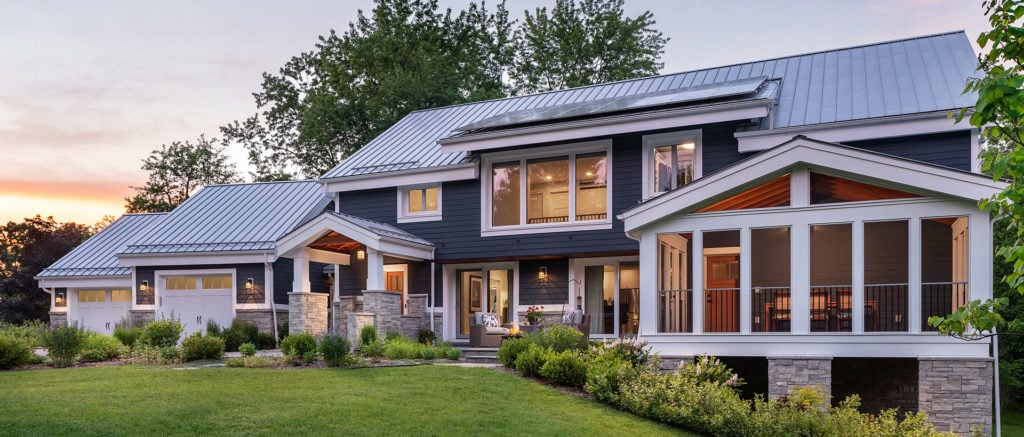
As a green custom home builder, we’re often asked how sustainable building differs from traditional residential construction. The best way to illustrate the difference is to take you through a very basic version of the checklist we use as part of our own approach with our clients who are building green.
This is often a homeowner’s primary motivation for “going green.” In planning a sustainable or “green” home, we look at every possible avenue for saving energy and water. From selecting Energy Star appliances and highly efficient low-flow plumbing fixtures, to insulation and air sealing, to efficient LED lighting and even to sustainable landscaping. Once these items are considered, we then talk about the use of renewable energy such as solar power and geothermal heating and cooling.
This new Tudor-style custom home we recently built is the perfect mix of old-world technology meeting cutting-edge green technology. Rain-gardens were incorporated into the sustainable landscaping to help keep rainwater out of the storm sewer system.
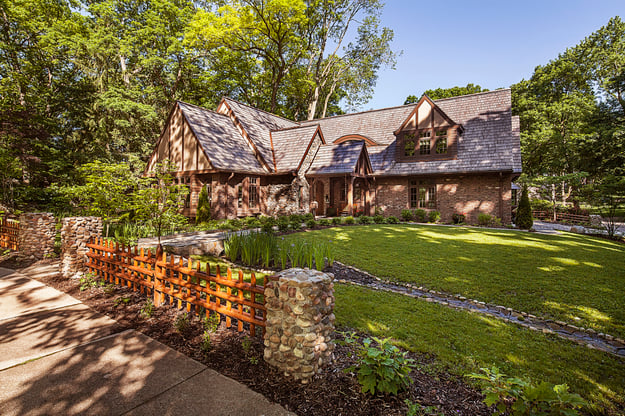
When we look at the site for the home, we evaluate sustainability. How can we use the attributes of the site to gain passive energy? How can the site best create a harmonious feel that will draw the outside in and work well with the surroundings? What specific elements of the site are important to pay attention to for creating energy that flows naturally in the home? And for those clients who want to build a passive house, site orientation is a key element in helping the home get to net-zero energy usage.
For this custom home, we utilized passive house techniques to find the perfect location to capture the solar energy imparted to this home.
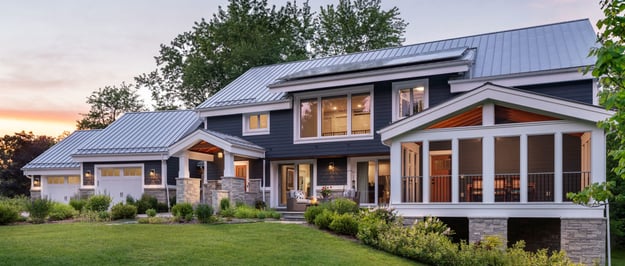
This means we look for materials that are recycled, renewable, or sustainably sourced to meet our client’s goals. Locally-sourced materials are also key as the energy needed to get them from production to their end use is minimized. Even more importantly – what impact do those materials have on the health of the home? Quality green materials do not produce harmful off-gassing and are not made from components that could potentially damage an occupants health. There are literally tens of thousands of chemicals in building products that have never been tested for their health effects. Knowing what is in the building materials is very important for indoor air quality – especially now when we are spending more time in our homes.
For this LEED Platinum Certified project, reclaimed wood was used in the stair treads and also for the legs of this custom-designed dining table.
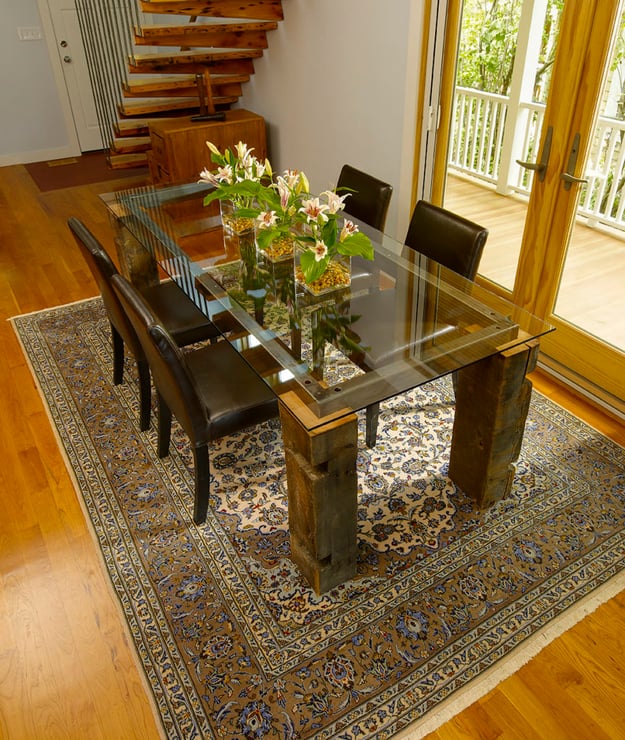
As a custom green home builder, we’re always conscious of how to make a home that is designed for the best in comfort and healthy indoor air quality. We pay careful attention to proper ventilation and a right-sized – properly sealed – heating and cooling system. We use Energy Recovery Ventilators (ERV’s) in our homes to help maintain the proper amount of ventilation in a home that is well insulated and sealed. This ensures healthy indoor air quality, the right balance of moisture, and it eliminates hot and cold spots that can make homes uncomfortable. The below conceptual schematic illustrates how an ERV works in your home.
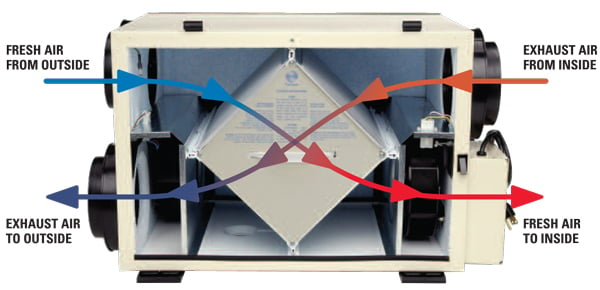
We already noted that LED lighting will help save energy costs, but using natural daylight not only is free energy, but it also adds to the how the home feels. A home with bright spaces that are flooded with loads of natural daylight just feels better to its occupants. With good design, clever window placement and products like solar tubes, you can bring daylight into spaces where traditional windows may not make sense.
For this kitchen we used clerestory windows to bring in natural daylight without jeopardizing useable wall space for cabinetry.
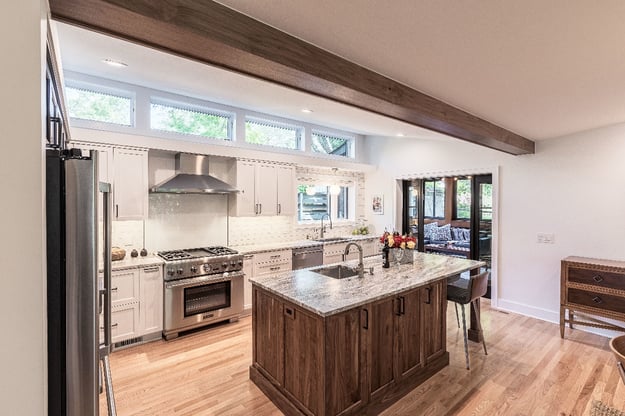
Last but certainly not least is doing our best to minimize the amount of construction waste going into the dumpster. Carefully deconstructing during demolition creates opportunities to reuse and recycle materials in a variety of ways. Organizations like Habitat For Humanity Restore and Recycle Ann Arbor are great resources that will take used construction materials and appliances and put them to good use. Often times, we use deconstructed items in the rebuild of the home.
For this LEED Platinum Certified Whole Home Renovation we re-used the bricks and support beams that were saved during the deconstruction of the original home.
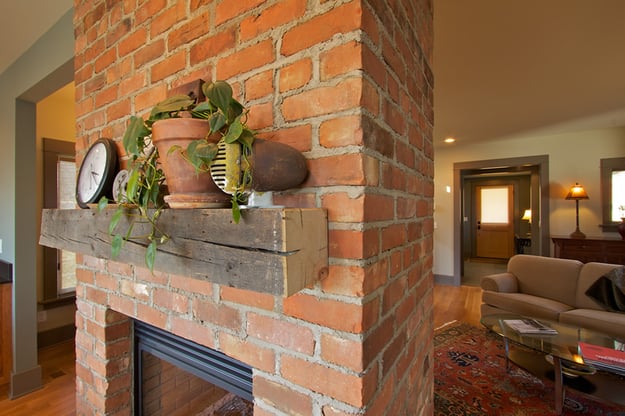
This is a very simplified way to talk about the differences between a green custom home and standard construction. There are many other green building techniques – both from a design and a construction focus – that will separate a sustainable home from a standard code-built home. But most importantly – the difference is realized in the long-term energy savings, the comfort and health or our clients, and their role in walking more gently on the planet.
Thinking about building a green home? We’d love to start the conversation.
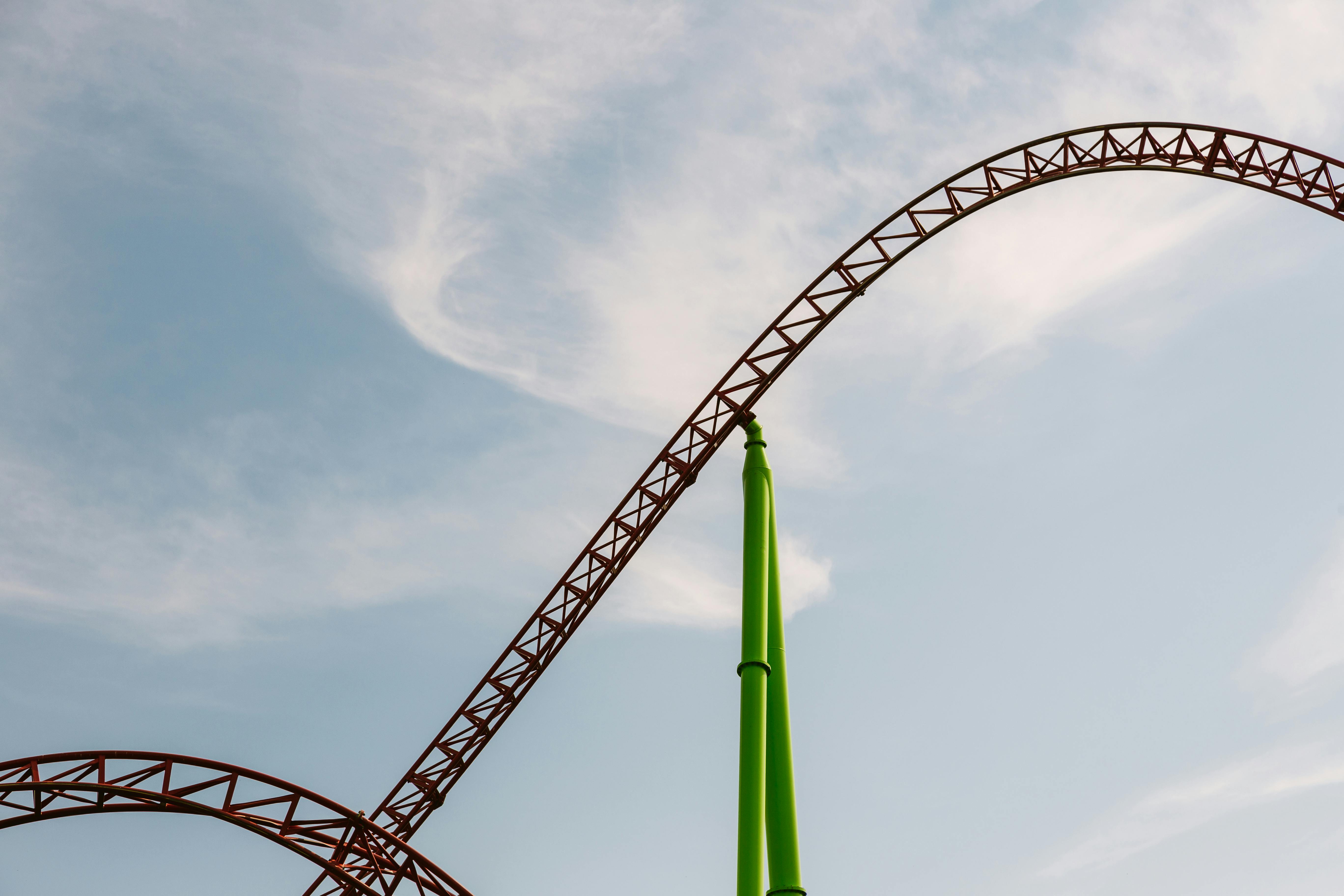
1 min read
Every home remodeling journey comes with its own set of emotions, and no project is without its ups and downs. After remodeling homes in the greater...
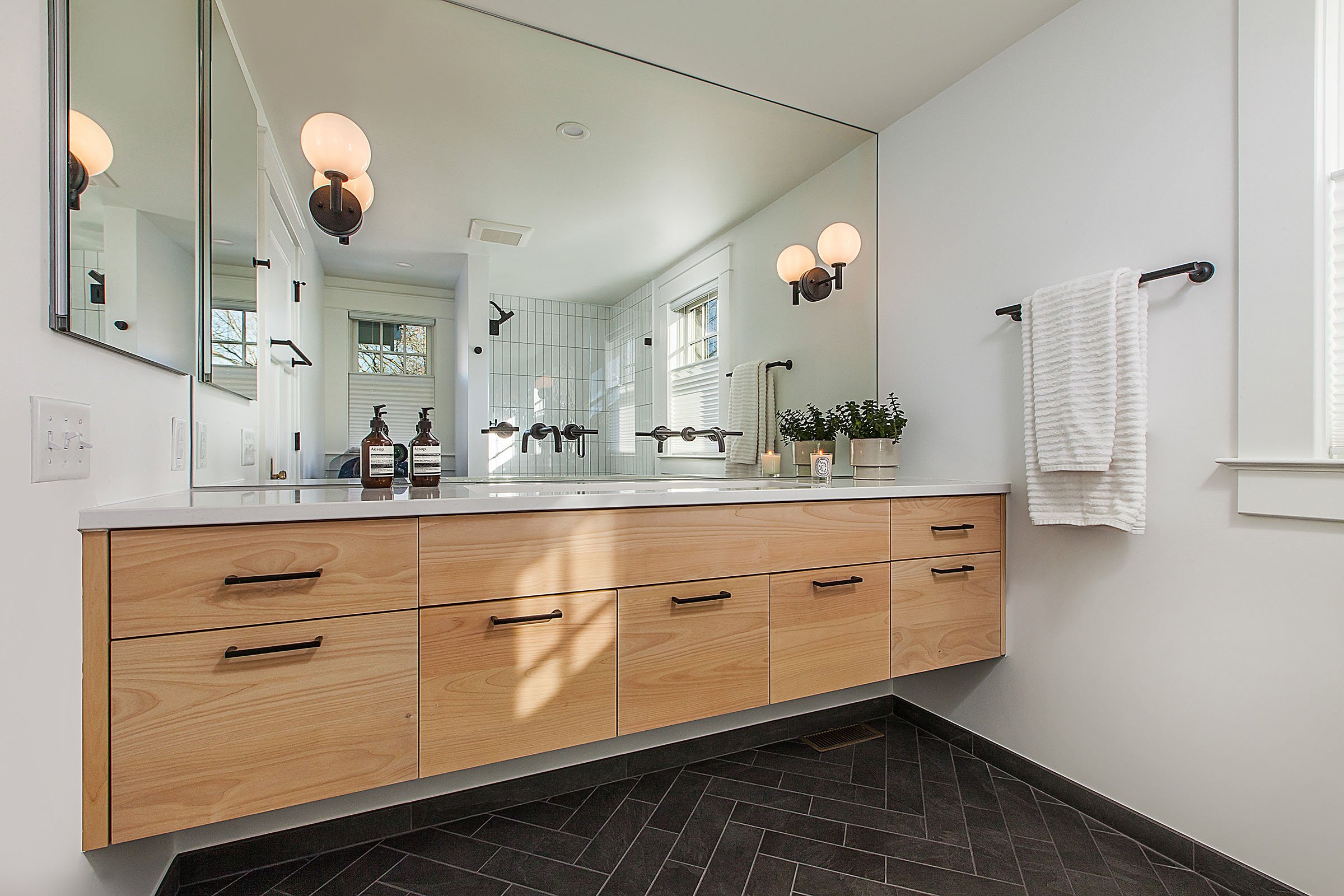
Transforming your home is not just about aesthetics; it's about finding solutions that fit your budget and lifestyle. When upgrading your kitchen or...
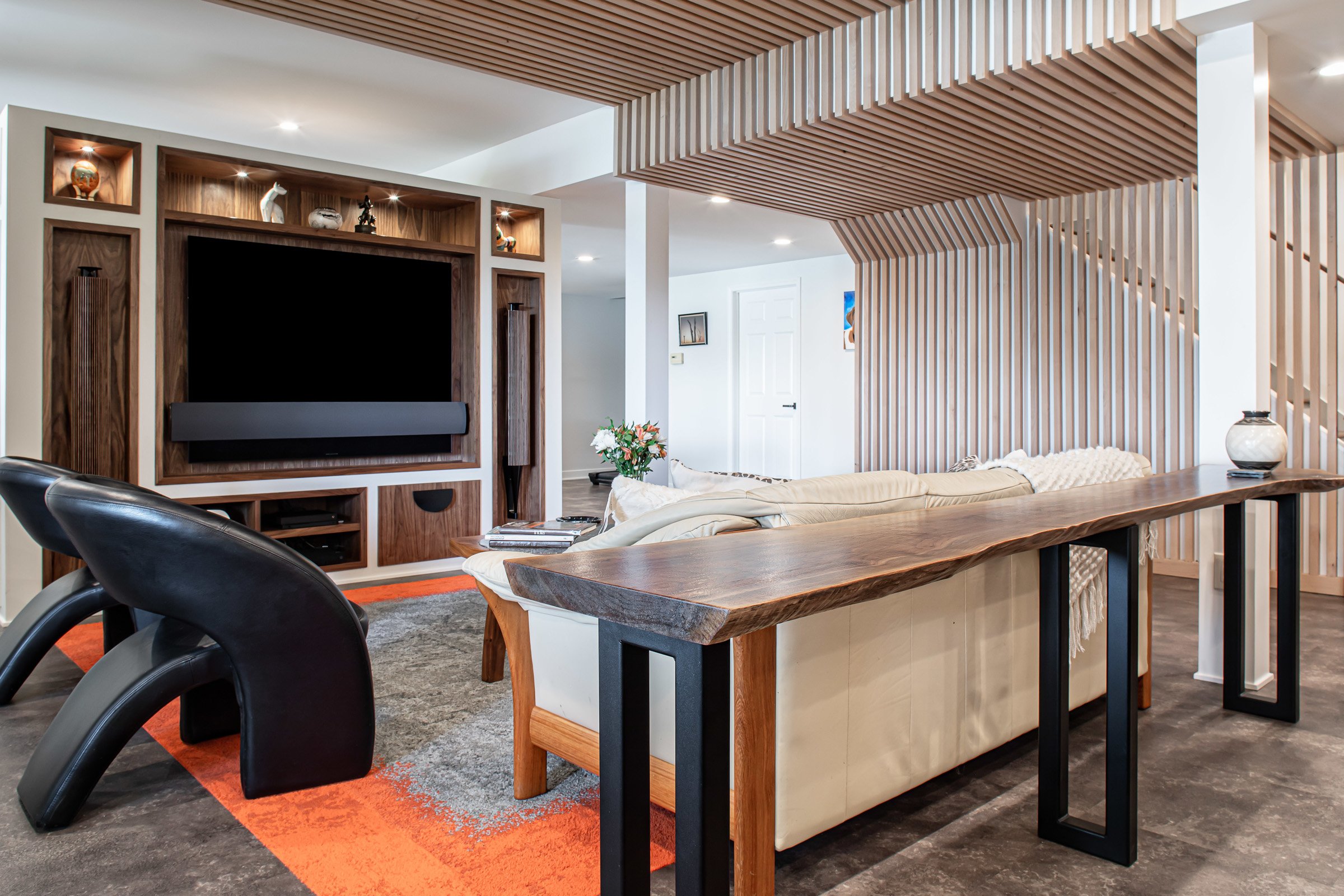
We’re thrilled to be featured in The Scout’s Guide’s latest piece, “How to Upgrade Your Basement, According to the Experts.” We invite you to check...